Home>diy>Building & Construction>How Do Bed Bugs Spread In An Apartment Building
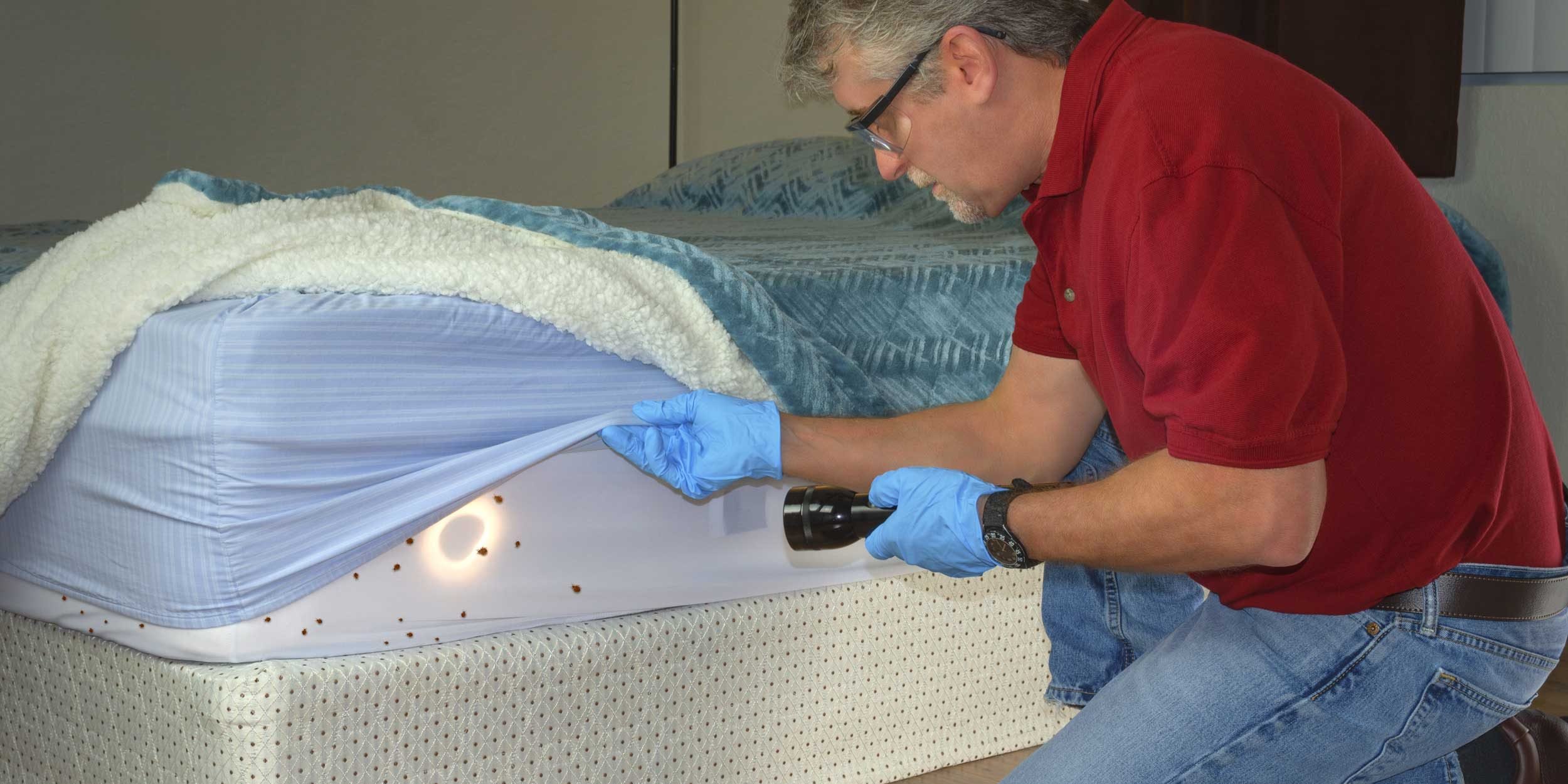

Building & Construction
How Do Bed Bugs Spread In An Apartment Building
Modified: January 9, 2024
Learn how bed bugs can quickly spread in apartment buildings due to the close proximity of units and shared spaces. Discover effective strategies for preventing and eliminating these pests in building-construction.
(Many of the links in this article redirect to a specific reviewed product. Your purchase of these products through affiliate links helps to generate commission for Storables.com, at no extra cost. Learn more)
Introduction
Living in an apartment building has its perks – convenient amenities, close proximity to neighbors, and a sense of community. However, there is one unwelcome guest that can disrupt the peace and comfort of apartment living: bed bugs. These tiny, blood-sucking pests are notorious for infesting apartments and rapidly spreading from one unit to another.
Bed bugs are incredibly resilient and can survive for months without feeding. They can hitch a ride on clothing, furniture, or even luggage, making it easy for them to move from one apartment to another. Once they make their way into an apartment building, they can quickly infest multiple units, causing discomfort and frustration for residents.
Understanding how bed bugs spread in apartment buildings is essential in order to prevent and control infestations. In this article, we will explore the factors that contribute to the spread of bed bugs in apartment buildings and discuss effective strategies to prevent and eliminate these pesky pests.
Key Takeaways:
- Collaboration and communication among residents, proactive education, and regular inspections are crucial in preventing the spread of bed bugs in apartment buildings. A united front is essential for a pest-free living environment.
- Proper disposal of infested items, sealing cracks and crevices, and comprehensive treatment plans are vital in eradicating bed bug infestations. Ongoing education and preventive measures are key to maintaining a pest-free environment.
Read more: How Fast Do Bed Bugs Spread
Understanding Bed Bugs
Before we delve into the factors that contribute to the spread of bed bugs in apartment buildings, it is important to have a basic understanding of these pests. Bed bugs are small insects that feed on human blood. They are nocturnal creatures that typically hide during the day and come out at night to feed on sleeping hosts.
Bed bugs are excellent hitchhikers and can easily travel from place to place by clinging onto clothing, bedding, or furniture. Contrary to popular belief, bed bugs do not discriminate between clean and dirty environments. They can infest homes, hotels, hospitals, and yes, even apartment buildings.
The most common sign of a bed bug infestation is waking up with itchy, red bites on your body that are often arranged in a cluster or a line. You may also notice small blood stains on your sheets or dark spots on your mattress, which are the bed bug droppings.
It is important to note that bed bugs are not a sign of poor hygiene or cleanliness. They are simply opportunistic creatures that are drawn to warmth, darkness, and the carbon dioxide we exhale during sleep. So, if you find yourself dealing with bed bugs in your apartment building, understand that it is not your fault.
Now that we have a better understanding of bed bugs, let’s explore the factors that contribute to their spread in apartment buildings.
Factors Contributing to the Spread of Bed Bugs in Apartment Buildings
Apartment buildings provide the perfect environment for bed bugs to thrive and multiply. The close proximity of units, shared spaces, and constant movement of residents all contribute to the rapid spread of these pests. Here are some key factors that contribute to the spread of bed bugs in apartment buildings.
- Lack of Awareness and Education: Many people are unaware of the signs of a bed bug infestation and may unknowingly bring them into the building. Without proper education and awareness, residents may not take the necessary precautions to prevent the spread of bed bugs.
- Infested Furniture and Belongings: Infested furniture and belongings brought into the building are one of the primary ways that bed bugs are introduced. Residents may unknowingly bring in secondhand furniture, mattresses, or clothing that is infested with bed bugs, allowing them to spread throughout the building.
- Cracks and Crevices in Walls and Flooring: Apartment buildings often have numerous hiding spots for bed bugs, such as cracks and crevices in walls, floors, and baseboards. These hiding spots provide ideal conditions for bed bugs to lay their eggs and multiply, making it easier for them to spread to neighboring units.
- Shared Laundry Facilities: Shared laundry facilities in apartment buildings can be a hot spot for bed bug activity. Bed bugs can easily hitch a ride on clothing or bedding and infest the laundry machines, leading to the spread of these pests to other residents’ clothing and belongings.
- Visitors and Neighbors: Visitors or neighbors who are unknowingly infested with bed bugs can easily transfer the pests to other units. Bed bugs can crawl from one apartment to another through cracks in walls, electrical outlets, or shared ventilation systems.
Understanding these factors is crucial in developing effective strategies to prevent, detect, and eliminate bed bug infestations in apartment buildings. In the next section, we will discuss preventative measures to help stop the spread of bed bugs.
Lack of Awareness and Education
One of the primary factors contributing to the spread of bed bugs in apartment buildings is the lack of awareness and education among residents. Many people are simply unaware of what bed bugs are, how they spread, and how to prevent infestations. This can lead to a lack of vigilance and unintentional actions that facilitate the spread of these pests.
Without proper education, residents may not know the signs of a bed bug infestation or how to take preventive measures. They may not inspect their belongings or furniture before bringing them into their apartment, unknowingly introducing bed bugs into the building. Additionally, residents may not take immediate action to report a bed bug infestation, allowing it to spread to neighboring units.
Education is key in combating the spread of bed bugs in apartment buildings. Property managers and landlords should provide educational materials and resources to tenants, informing them about the signs of bed bugs, how to prevent infestations, and what steps to take if they suspect an infestation. This can be done through informational brochures, workshops, or online resources.
Tenant education should include information on how to properly inspect secondhand furniture or other items before bringing them into the apartment. Teaching residents how to identify bed bugs, their eggs, and signs of infestations can help them take early preventive measures and report any issues promptly.
In addition to educating residents, property managers should also prioritize their own education and training on bed bug prevention and control. This will enable them to provide accurate information and guidance to tenants, as well as have the knowledge required to implement effective prevention and control measures in the building.
By addressing the lack of awareness and education about bed bugs in apartment buildings, residents can be better equipped to prevent the spread of these pests. This knowledge empowers individuals and encourages a proactive approach to keeping the building bed bug-free.
Infested Furniture and Belongings
Infested furniture and belongings pose a significant risk for the spread of bed bugs in apartment buildings. Bed bugs are skilled hitchhikers and can easily attach themselves to furniture, mattresses, clothing, and other items.
Residents may unknowingly bring in infested furniture or secondhand items into their apartments, providing a haven for bed bugs to thrive. Even seemingly clean and well-maintained furniture can harbor these pests. They can hide in the seams, crevices, or cracks of furniture, making it difficult to detect their presence.
When infested furniture is brought into an apartment, the bed bugs quickly spread to other areas. They crawl out of the furniture and start infesting neighboring units, creating a domino effect of infestations within the building.
To prevent the spread of bed bugs through infested furniture and belongings, it is essential for residents to take precautions. Before bringing any secondhand furniture or items into their apartment, residents should thoroughly inspect them for signs of bed bug activity. Look for live bugs, shed exoskeletons, dark spots (which are bed bug droppings), or bloodstains.
If signs of bed bugs are found, it is crucial to avoid bringing the infested item into the building. Instead, residents should consider discarding the item or contacting a professional pest control company to handle the situation properly. Taking such proactive measures can prevent infestations from taking hold in the apartment building.
For existing furniture and belongings, regular inspections and maintenance are key. Residents should periodically check their furniture, mattresses, and upholstery for signs of bed bugs. If any signs are detected, immediate action should be taken, such as contacting a pest control professional for treatment.
In the case of an active bed bug infestation, it is important to properly dispose of infested furniture and belongings to prevent the spread of these pests. Seal the items securely in plastic bags and label them as “infested” to avoid others from unknowingly picking them up. Additionally, inform the building management or landlord about the infestation so that appropriate steps can be taken to address the issue in a prompt and efficient manner.
By being cautious about infested furniture and belongings, residents can help minimize the spread of bed bugs in apartment buildings and maintain a pest-free environment for everyone.
Read more: Where Do Bed Bugs Live
Cracks and Crevices in Walls and Flooring
One of the prime locations for bed bugs to hide and breed in apartment buildings is the cracks and crevices in walls and flooring. These tiny pests are incredibly adept at squeezing into small spaces, making these gaps the perfect harborage sites.
Cracks and crevices in walls and flooring provide bed bugs with a safe and secluded place to lay their eggs, hide during the day, and emerge at night to feed on sleeping hosts. These pests can easily travel through electrical outlets, gaps around baseboards, or openings in walls to move from one apartment to another.
The presence of cracks and crevices in apartment buildings is often inevitable, as wear and tear, settling of the structure, and other factors can create these openings. Additionally, repairs or renovations in neighboring units can inadvertently create new hiding spots for bed bugs.
To prevent the spread of bed bugs through cracks and crevices, it is essential to seal off these potential entry points. Property managers should regularly inspect and maintain the building’s walls and flooring, repairing any cracks or openings found. This can be achieved through caulking, patching, or using appropriate sealants to close off these gaps.
It is recommended to involve professional pest control services to address cracks and crevices effectively. They have the expertise and tools to identify and seal off potential entry points that may not be immediately visible. By sealing off these openings, the spread of bed bugs within the building can be significantly reduced.
Residents can also play a role in preventing the spread of bed bugs through cracks and crevices. They should inspect their own apartments for any signs of cracks or openings and report them to the building management or landlord promptly. In addition, residents should avoid using DIY methods to seal off cracks, as some materials may not be effective in deterring bed bugs.
By addressing and sealing off cracks and crevices in walls and flooring, apartment buildings can create a more inhospitable environment for bed bugs, reducing their ability to spread throughout the building.
Shared Laundry Facilities
Shared laundry facilities in apartment buildings can be a hotspot for bed bug activity and a major contributor to their spread. Bed bugs have a knack for hitchhiking on clothing, bedding, and other fabrics, making the laundry room an ideal place for them to move from one apartment to another.
When an infested item is brought into the laundry room, the bed bugs can quickly crawl off and infest the machines, folding tables, or nearby surfaces. As residents use the machines to wash or dry their clothes, the bed bugs can transfer onto their clothing, thus spreading to other units when the clothing is taken back to the respective apartments.
To prevent the spread of bed bugs through shared laundry facilities, it is essential to establish proper protocols and guidelines for their use and maintenance.
First and foremost, regular cleaning and inspections of the laundry room should be conducted by building management or staff to identify any signs of bed bug activity. This includes checking machines, countertops, and other surfaces for live bugs, eggs, or other indications of infestations.
Moreover, it is crucial for residents to take individual responsibility for preventing the spread of bed bugs through the laundry room. They should inspect their clothing and other items before bringing them into the laundry facility. If bed bugs are suspected or detected, the infested items should not be taken to the laundry room, but instead should be handled separately and treated accordingly.
When using the machines, residents should avoid leaving their belongings unattended for long periods, as this provides an opportunity for bed bugs to crawl onto their items. It is also important to properly package and transport laundry, such as using sealed bags, to prevent bed bugs from escaping or hitching a ride.
Regular maintenance and cleaning of the laundry machines is essential. The machines should be inspected and, if necessary, treated for bed bugs by a professional pest control service. This can help eliminate any existing infestations and prevent new ones from occurring.
By implementing proper protocols, regular inspections, and resident education, the spread of bed bugs through shared laundry facilities can be minimized, creating a safer and more hygienic environment for apartment building residents.
Visitors and Neighbors
Visitors and neighbors have the potential to play a significant role in the spread of bed bugs in apartment buildings. Bed bugs are notorious hitchhikers and can easily crawl from one apartment to another through various means, including shared walls, electrical outlets, or even ventilation systems.
Visitors to an infested apartment can unknowingly carry bed bugs on their clothing, bags, or belongings, allowing the pests to gain access to other parts of the building. Similarly, neighbors who are dealing with a bed bug infestation can inadvertently transport the pests to common areas or shared spaces.
To prevent the spread of bed bugs through visitors and neighbors, it is essential to increase awareness and promote proactive measures:
- Education: Tenants should be educated about the signs of bed bugs and how to prevent their spread. This knowledge can be shared through informational pamphlets, building-wide meetings, or online resources. By educating residents, they can take precautions and inform their visitors about the potential risks of spreading bed bugs.
- Communication: Open communication channels should be established among residents. If a resident is dealing with an active bed bug infestation, they should notify their neighbors and building management. This allows others to be vigilant and take preventive measures to avoid introducing bed bugs into their units.
- Vigilance: Residents should be encouraged to inspect their units regularly for signs of bed bugs. If they suspect an infestation or notice any suspicious activity, they should promptly report it to building management or a pest control professional. This early intervention can prevent further spread and minimize the impact on the entire building.
- Visitor Guidelines: It can be beneficial to establish visitor guidelines that emphasize the importance of preventing the spread of bed bugs. This may include guidelines such as not bringing in secondhand furniture, inspecting belongings before entering the building, or using designated entrances to minimize contact with potential infested areas.
- Collaboration: Building management and residents should work together to address any bed bug issues promptly. This may involve coordinating professional inspections and treatments, providing resources for affected residents, or offering support in terms of education and prevention strategies.
By increasing awareness, promoting communication, and encouraging vigilance among residents, the spread of bed bugs through visitors and neighbors can be minimized. Collaboration and proactive measures are key to maintaining a bed bug-free environment in apartment buildings.
To prevent bed bugs from spreading in an apartment building, regularly inspect for signs of infestation, educate residents about bed bug prevention, and promptly address any reported issues to prevent further spread.
Preventing the Spread of Bed Bugs in Apartment Buildings
Preventing the spread of bed bugs in apartment buildings requires a comprehensive approach that involves both proactive measures from building management and active participation from residents. By implementing the following strategies, the risk of bed bug infestations can be minimized, creating a healthier and more comfortable living environment for everyone:
- Regular Inspections and Monitoring: Building management should conduct regular inspections of units, common areas, and shared spaces to detect any signs of bed bug activity. Prompt action can be taken to address infestations before they have a chance to spread.
- Proper Disposal of Infested Items: When residents discover infested furniture, mattresses, or other belongings, they should properly dispose of them to prevent further spread. This involves sealing the items in plastic bags and labeling them as “infested” to alert others.
- Sealing Cracks and Crevices: Regular maintenance should be performed to identify and seal off cracks, crevices, and other potential entry points for bed bugs. Professional pest control services can be utilized to ensure thorough and effective sealing.
- Educating Tenants and Staff: Building management should provide educational materials, workshops, or online resources to educate residents about bed bugs, their signs, and prevention methods. Proper training should also be provided to building staff to effectively detect and address infestations.
- Collaboration and Communication among Residents: Open communication among residents is crucial in preventing the spread of bed bugs. Encouraging residents to report suspected infestations, share information, and support one another in addressing bed bug issues creates a unified approach.
Additionally, individual residents can take proactive steps to protect themselves and their apartments:
- Regular Inspections: Conduct regular inspections of your apartment for any signs of bed bugs, such as bites, bloodstains, or dark spots. Promptly report any suspicions to building management.
- Preventive Measures: Avoid bringing in secondhand furniture or items of unknown origin without thorough inspection. Encase mattresses and box springs in bed bug-proof covers to prevent infestations.
- Vigilance during Travel: When traveling, inspect luggage and clothing for any signs of bed bugs before returning to the apartment. Use luggage racks or stands to keep items off the floor in hotel rooms.
- Laundry Precautions: Inspect and shake out clothing before placing it in shared laundry machines. Put clothes in sealed bags when transporting them to and from the laundry room.
- Proper Response: If you suspect a bed bug infestation, immediately report it to building management. Follow their guidelines in terms of treatments, inspections, and necessary steps to prevent further spread.
By combining these preventive measures, apartment buildings can significantly reduce the risk of bed bug infestations and minimize their spread. Proactive actions, education, and collaboration are vital in ensuring a bed bug-free environment for all residents.
Read more: How Fast Do Bed Bugs Reproduce
Regular Inspections and Monitoring
Regular inspections and monitoring are essential in preventing the spread of bed bugs in apartment buildings. Building management should conduct routine inspections of units, common areas, and shared spaces to detect any signs of bed bug activity. These inspections serve as a proactive approach to identify and address infestations before they have a chance to spread throughout the building.
During inspections, trained professionals should carefully examine areas where bed bugs are most likely to hide, such as beds, upholstered furniture, cracks in walls and flooring, and electrical outlets. They look for live bugs, shed exoskeletons, dark spots (which are bed bug droppings), and eggs. If any signs of bed bugs are detected, prompt action should be taken to treat the affected areas and prevent further infestations.
Additionally, the use of monitoring devices like bed bug traps or interception devices can be helpful in detecting bed bugs early on. These devices can be placed strategically around the building to catch any bed bugs that may be crawling between units or in common areas.
Residents should also be encouraged to report any suspected bed bug activity to building management. Prompt reporting allows for swift inspections and targeted treatments, minimizing the spread of these pests.
Regular inspections and monitoring not only help detect and address existing infestations, but they also serve as a preventive measure by identifying potential bed bug introduction sources. By proactively addressing these sources, such as cracks and crevices in walls, residents bringing in infested furniture, or other factors specific to the building, the risk of bed bug infestations can be significantly reduced.
It is important for building management to develop a comprehensive inspection and monitoring schedule, ensuring that all areas vulnerable to bed bug infestations are thoroughly checked. Regular inspections, along with resident cooperation and awareness, create a proactive approach to keeping apartment buildings free from bed bugs and providing residents with peace of mind.
Proper Disposal of Infested Items
Proper disposal of infested items is a crucial step in preventing the spread of bed bugs in apartment buildings. When residents discover furniture, mattresses, or other belongings that are infested with bed bugs, it is important to handle their disposal appropriately to avoid further infestations.
Infested items should be securely wrapped and sealed in heavy-duty plastic bags to contain the bed bugs and prevent them from escaping. It is important to ensure that the bags are tightly sealed to prevent any potential spread of bed bugs during transportation or disposal.
Labeling the bags as “infested” can help alert others and prevent accidental contact or retrieval of the infested items. This simple action serves as a clear warning to building staff, residents, or waste management personnel to handle the bags with caution and avoid spreading the bed bugs.
It is crucial to follow the guidelines and regulations set by local waste management authorities for the disposal of infested items. Some areas may require specific instructions for disposing of infested furniture, mattresses, or large items. This may include scheduling a special pick-up or bringing them to designated waste disposal areas.
Building management should work closely with residents to ensure they are aware of the proper procedures and provide guidance on how to dispose of infested items. Clear communication between management and residents is key in minimizing the risk of others inadvertently coming into contact with infested furniture or belongings.
In some cases, it may be necessary to contact a professional pest control company to handle the disposal of infested items. They have the expertise, tools, and experience to properly handle infested materials and ensure they are disposed of in a manner that does not contribute to the spread of bed bugs.
By properly disposing of infested items, apartment buildings can effectively break the cycle of bed bug infestations. It eliminates potential hiding places for bed bugs and reduces the risk of other residents inadvertently coming into contact with the infested items and introducing bed bugs into their units.
Proper disposal, in conjunction with other preventive measures, plays a crucial role in keeping apartment buildings free from bed bugs while maintaining a safe and healthy living environment for all residents.
Sealing Cracks and Crevices
Sealing cracks and crevices in apartment buildings is an effective strategy to prevent the spread of bed bugs. These tiny pests are experts at finding small hiding spots, and cracks and crevices in walls, flooring, and furniture provide perfect harborage sites for them to thrive and reproduce.
To minimize the opportunities for bed bugs to infest the building, it is essential to proactively seal off these potential entry points. Building management should conduct regular inspections to identify cracks, gaps, or openings that could serve as hiding places for bed bugs.
Professional pest control services can be utilized to properly seal the cracks and crevices. They have the knowledge, expertise, and appropriate sealants to effectively close off these entry points. Depending on the severity and location of the cracks, various sealing methods such as caulking, patching, or using weather stripping may be employed. It is important to select high-quality sealants that are specifically designed to deter bed bugs.
Sealing cracks and crevices not only helps prevent the entry of bed bugs into individual units but also prevents their movement between units. By closing off these potential access points, the spread of bed bugs can be significantly limited within the apartment building.
In addition to structural cracks, attention should also be given to other areas prone to bed bug activity, such as electrical outlets, baseboards, and gaps around pipes or cables. Special attention should be given to areas near beds and furniture, as these are common hiding spots for bed bugs.
Residents can also contribute to the sealing efforts by inspecting their own units for cracks and gaps. If they identify any areas that need attention, they should promptly report them to building management to ensure they are properly sealed.
Regular maintenance and periodic re-inspections are essential to ensure that sealants remain intact and effective. Over time, cracks may reappear or sealants may deteriorate, creating new opportunities for bed bugs to infiltrate the building.
By sealing cracks and crevices, apartment buildings create a more inhospitable environment for bed bugs, making it harder for them to establish infestations and limiting their ability to spread from one unit to another. This preventive measure, combined with other strategies, plays a crucial role in preventing the spread of bed bugs in apartment buildings and maintaining a pest-free living environment for residents.
Educating Tenants and Staff
Education is a powerful tool in preventing the spread of bed bugs in apartment buildings. By providing comprehensive education and training to both tenants and staff, building management can empower everyone within the building to recognize the signs of bed bug infestations, understand how they spread, and take proactive measures to prevent their introduction and spread.
Tenant education is essential in creating a proactive and vigilant community. Building management should provide educational materials, such as brochures or handouts, that highlight the signs of bed bugs, their behavior, and prevention strategies. These materials can be distributed during lease signings, posted in common areas, or made available online for easy access.
Tenant education should cover topics such as:
- The identification of bed bugs, their eggs, and signs of infestation.
- How bed bugs spread and their ability to move between units.
- Preventive measures, such as inspecting secondhand furniture, regularly vacuuming, and practicing good hygiene.
- Proper reporting procedures for suspected infestations.
- Responsibilities and expectations of tenants in maintaining a bed bug-free living environment.
In addition to educating the tenants, it is equally important to provide education and training to building staff. Property managers, maintenance personnel, and other staff members should receive training on bed bug detection, reporting procedures, and appropriate actions to take when an infestation is suspected. This ensures that the staff can accurately identify signs of bed bug activity and respond swiftly and appropriately.
Building management should also keep staff members updated on the latest bed bug prevention techniques and treatment methods. This ongoing education equips staff with the necessary knowledge to effectively address bed bug issues, minimize their spread, and coordinate efforts with tenants.
Regular meetings, workshops, or training sessions can be conducted to reinforce the education and provide opportunities for tenants and staff to ask questions or share experiences related to bed bugs. Open communication channels should be established, allowing residents to report suspected infestations, ask for guidance, and receive prompt assistance.
With a well-informed community, tenants are more likely to take preventive actions, promptly report suspected infestations, and collaborate with building management to address bed bug issues. Residents who are equipped with accurate knowledge are less likely to inadvertently spread bed bugs or delay necessary treatments.
By investing in tenant and staff education, apartment buildings can foster a proactive mindset, creating a united front against bed bugs. This educational approach not only prevents the spread of bed bugs but also promotes a healthier and safer living environment for everyone within the building.
Read more: How Do People Get Bed Bugs
Collaboration and Communication among Residents
Collaboration and communication among residents are pivotal in preventing the spread of bed bugs in apartment buildings. When residents work together as a community, they can collectively take proactive measures, share information, and support one another in addressing bed bug issues effectively.
Open communication channels should be established within the building to encourage residents to report suspected bed bug infestations promptly. Building management should provide clear instructions on how and where to report any signs of bed bugs, ensuring that residents understand the importance of early intervention.
Residents should be encouraged to share their experiences and insights related to bed bugs. This can be done through building-wide meetings, community forums, or online platforms where residents can exchange information, tips, and advice. These platforms can prove invaluable, as experiences shared by others can help identify potential infestation sources and prevention strategies.
Collaboration is especially crucial when addressing bed bug infestations that may have originated from one unit and spread to others. When residents are aware of their responsibility to report suspected infestations, they can play an active role in preventing the further spread of bed bugs throughout the building.
Residents should also support one another by adhering to bed bug prevention measures. For example, if a neighbor reports a suspected infestation, neighboring residents should take proactive measures, such as conducting inspections, vacuuming regularly, and minimizing clutter, to reduce the risk of bed bugs spreading into their units.
Sharing preventive measures and best practices can be particularly helpful in ensuring that all residents are equipped with the knowledge and tools to protect themselves and their units from these pests. For instance, residents can discuss the importance of inspecting secondhand furniture, tips for preventing bed bugs during travel, or effective cleaning techniques to eradicate any potential infestations.
Building management should actively promote collaboration and communication among residents through various means, such as newsletters, community bulletin boards, or regular meetings. By fostering a sense of community and shared responsibility, residents are more likely to actively participate in bed bug prevention and control efforts.
Collaboration and communication enable residents to take a proactive and unified approach in the fight against bed bugs. By working together, they can support each other, share valuable information, and implement preventive measures, ultimately minimizing the spread of bed bugs within the apartment building.
Treatment and Extermination of Bed Bugs in Apartment Buildings
When bed bugs infest an apartment building, it is crucial to implement effective treatment and extermination methods to eradicate these pests. Timely and thorough treatment is essential to prevent the further spread of bed bugs and provide residents with a pest-free environment.
Professional pest control companies should be consulted for comprehensive treatment plans tailored to the specific needs of the apartment building. Here are some key considerations for the treatment and extermination of bed bugs:
- Inspection and Assessment: Prior to treatment, a thorough inspection should be conducted by pest control professionals to determine the extent and location of the infestation. This helps in developing a targeted treatment plan.
- Chemical Treatment: Chemical treatments, such as insecticide sprays, are commonly used to eliminate bed bugs. Pest control professionals will apply appropriate insecticides to infested areas, including beds, furniture, cracks, and other hiding spots. Non-chemical treatments, such as heat or steam treatments, may also be employed depending on the situation and preferences.
- Comprehensive Treatment: It is essential to treat all infested units simultaneously to avoid the migration of bed bugs from treated to untreated areas. Coordinating with residents and ensuring their cooperation is vital to the success of the treatment process.
- Follow-up Inspections and Treatments: Regular follow-up inspections should be conducted to monitor the effectiveness of the treatments and identify any potential re-infestations. Additional treatments may be necessary to address lingering bed bugs or newly discovered infestations.
- Collaboration with Residents: Residents play a crucial role in the treatment process. They should closely follow the instructions provided by the pest control professionals, such as preparing their units and laundering infested clothing and bedding. Ongoing communication with residents, addressing their concerns, and providing support are key to ensuring their cooperation during the treatment and extermination process.
- Preventive Measures: After the completion of the treatment, residents should continue practicing preventive measures to reduce the risk of future infestations. Regular inspections, proper maintenance, and adherence to recommended preventive practices can help maintain a bed bug-free environment.
It is important to note that successful treatment and extermination of bed bugs in an apartment building may require multiple treatments over a period of time. This is due to the resilient nature of bed bugs and the possibility of hidden infestations that may not be apparent initially.
Building management should work closely with pest control professionals to create a long-term plan that includes regular inspections, ongoing monitoring, and preventive measures to prevent the re-infestation of bed bugs in the future.
By implementing comprehensive and coordinated treatment strategies, involving residents, and maintaining open communication with pest control professionals, apartment buildings can successfully eliminate bed bug infestations, minimize their spread, and create a comfortable living environment for all residents.
Conclusion
Bed bug infestations can be a major nuisance in apartment buildings, but with proper prevention, education, and proactive measures, it is possible to prevent their spread and maintain a pest-free environment for residents. Understanding the factors that contribute to the spread of bed bugs, such as lack of awareness, infested furniture, cracks and crevices, shared laundry facilities, and visitors and neighbors, is crucial in developing effective prevention strategies.
Preventing the spread of bed bugs in apartment buildings requires a collective effort from building management, residents, and pest control professionals. Regular inspections and monitoring, proper disposal of infested items, sealing cracks and crevices, educating tenants and staff, and fostering collaboration and communication among residents are key strategies in preventing infestations and minimizing the spread of bed bugs.
When bed bug infestations do occur, prompt and comprehensive treatment is essential. Professional pest control services should be consulted to assess the extent of the infestation and develop a tailored treatment plan. Collaboration with residents, follow-up inspections, and ongoing preventive measures are necessary to ensure successful eradication and prevent re-infestation.
By implementing these preventive measures and strategies, apartment buildings can create a safer and more comfortable living environment for their residents, free from the nuisance and frustration caused by bed bug infestations. Ongoing education, strong communication, and collaboration among all stakeholders are critical in combating bed bug infestations and maintaining the wellbeing of the community.
Remember, preventing the spread of bed bugs in apartment buildings is a continuous effort that requires vigilance, cooperation, and a proactive approach. With a united front and a commitment to bed bug prevention, residents can enjoy a peaceful and pest-free living environment in their apartment building.
Frequently Asked Questions about How Do Bed Bugs Spread In An Apartment Building
Was this page helpful?
At Storables.com, we guarantee accurate and reliable information. Our content, validated by Expert Board Contributors, is crafted following stringent Editorial Policies. We're committed to providing you with well-researched, expert-backed insights for all your informational needs.
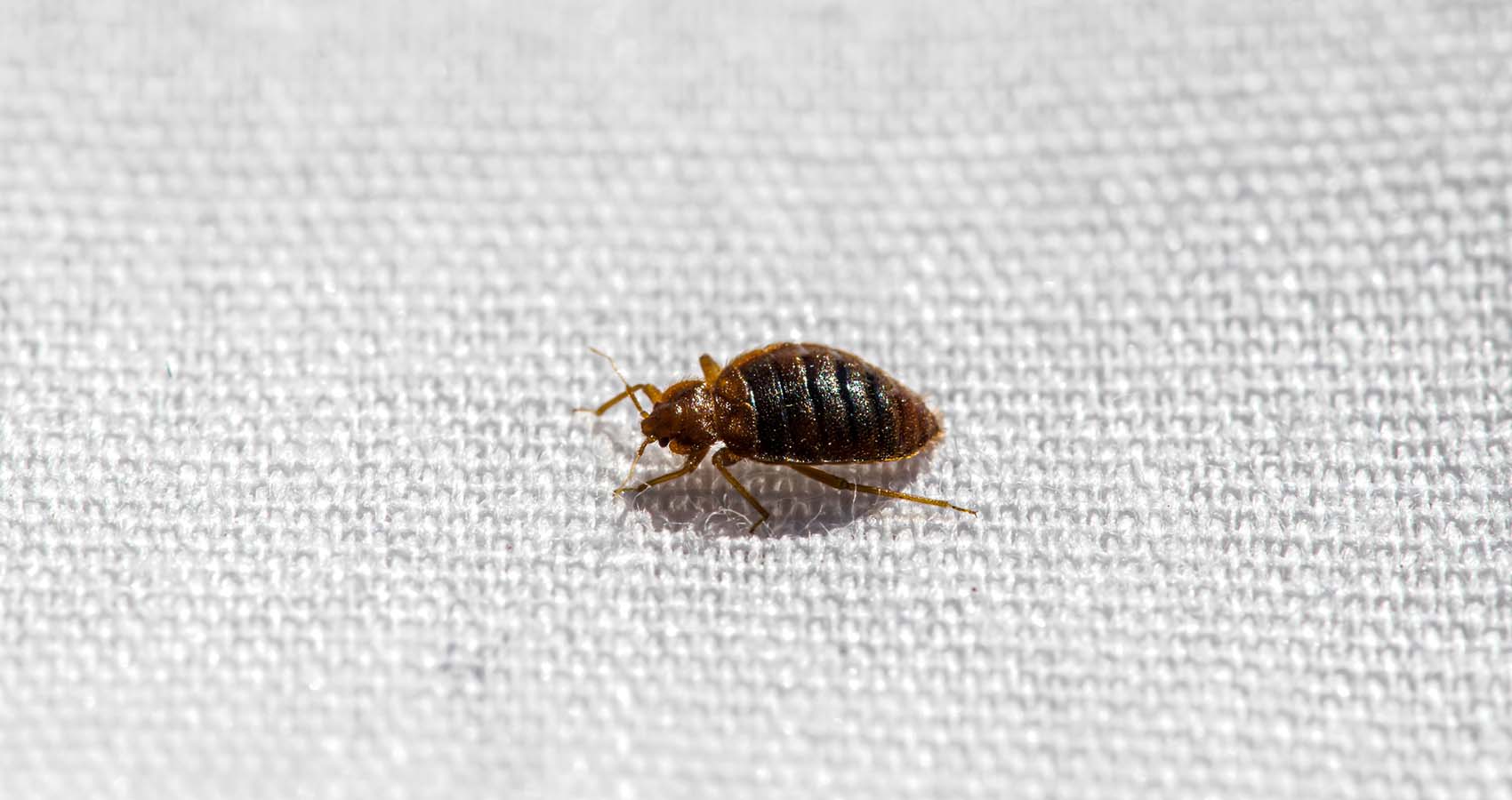

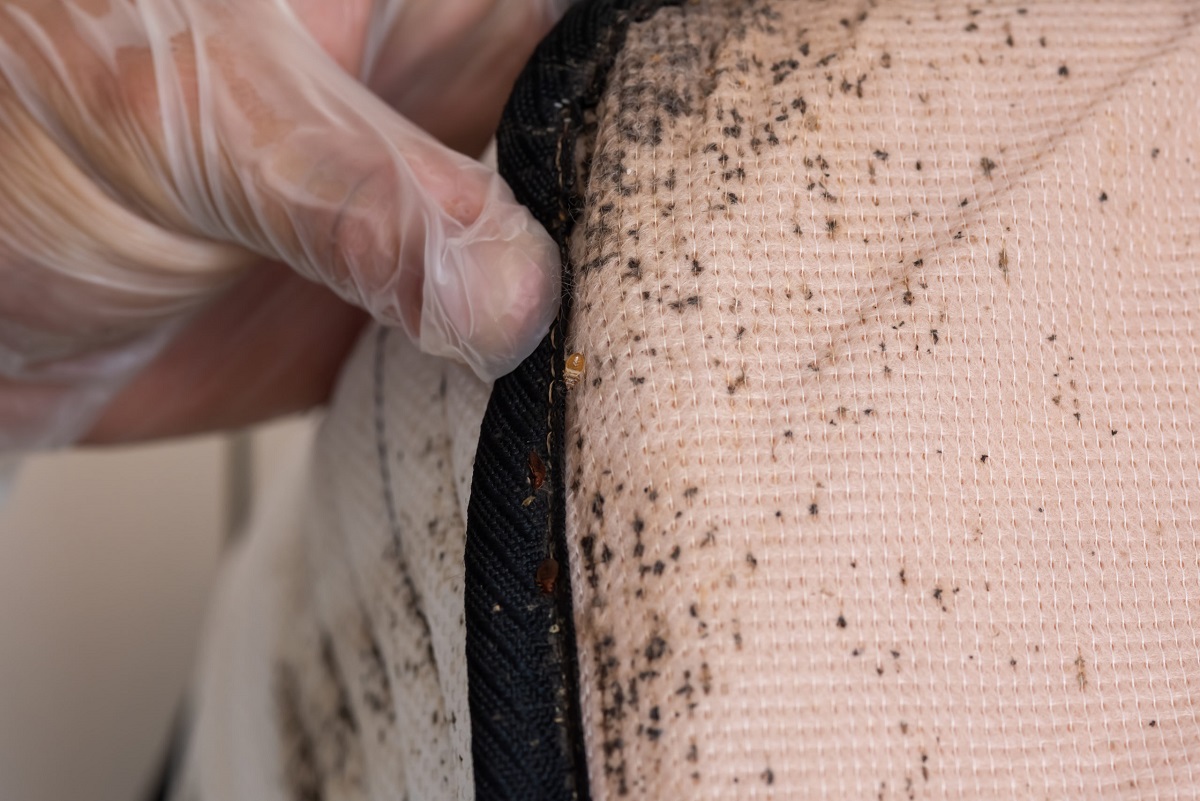

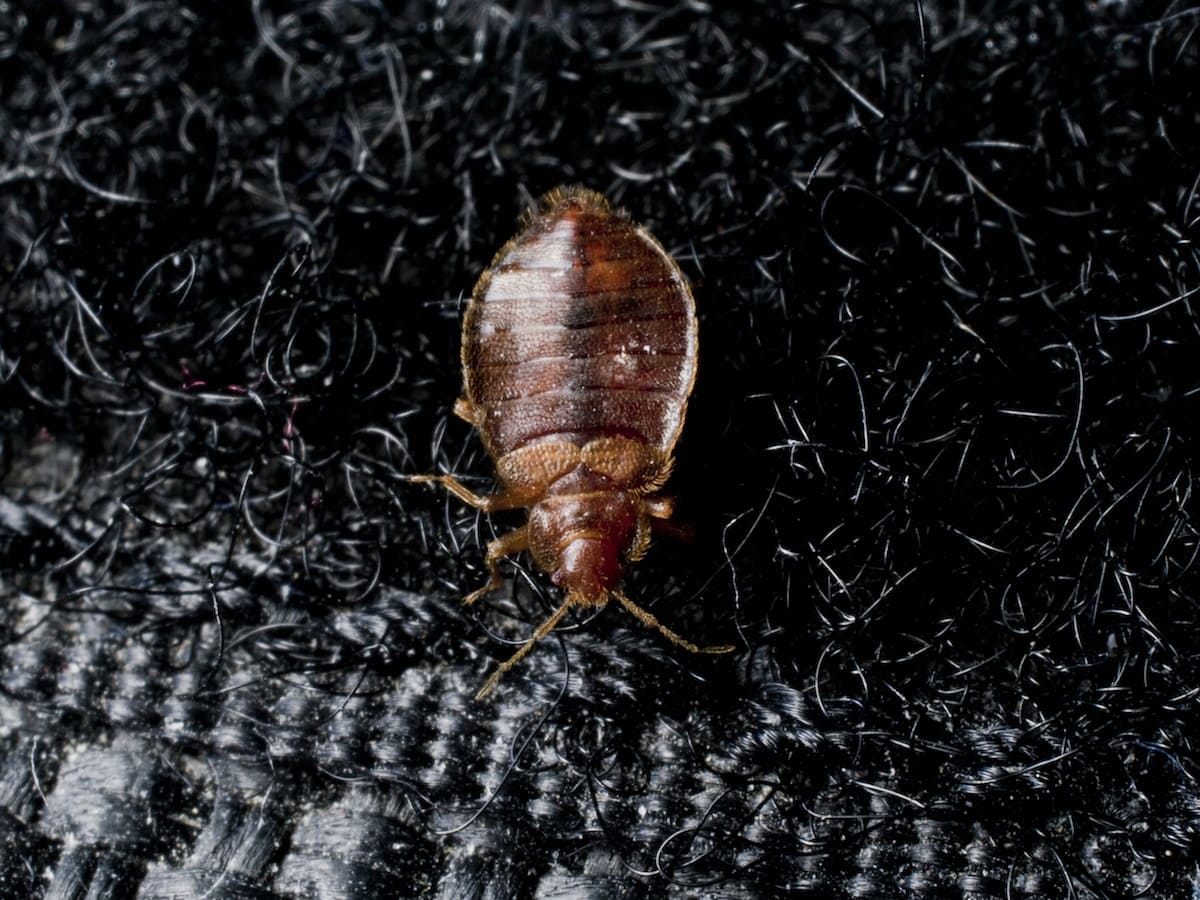
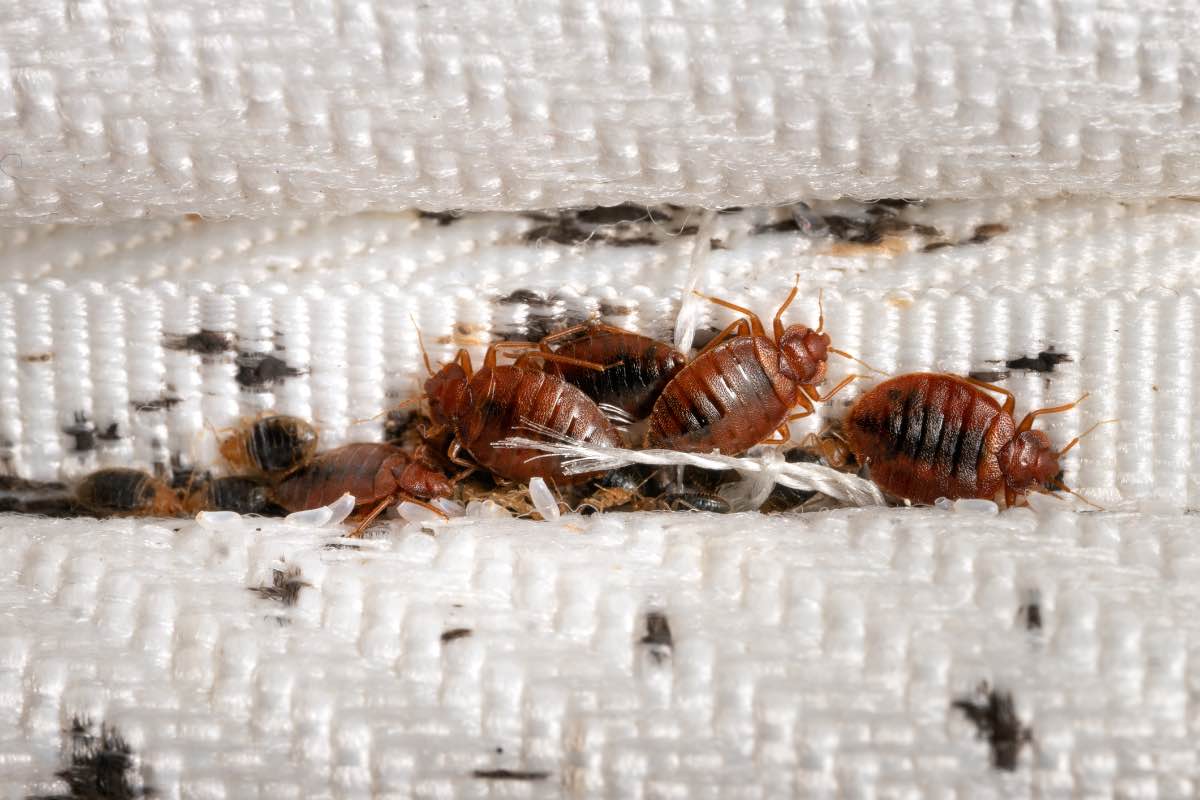
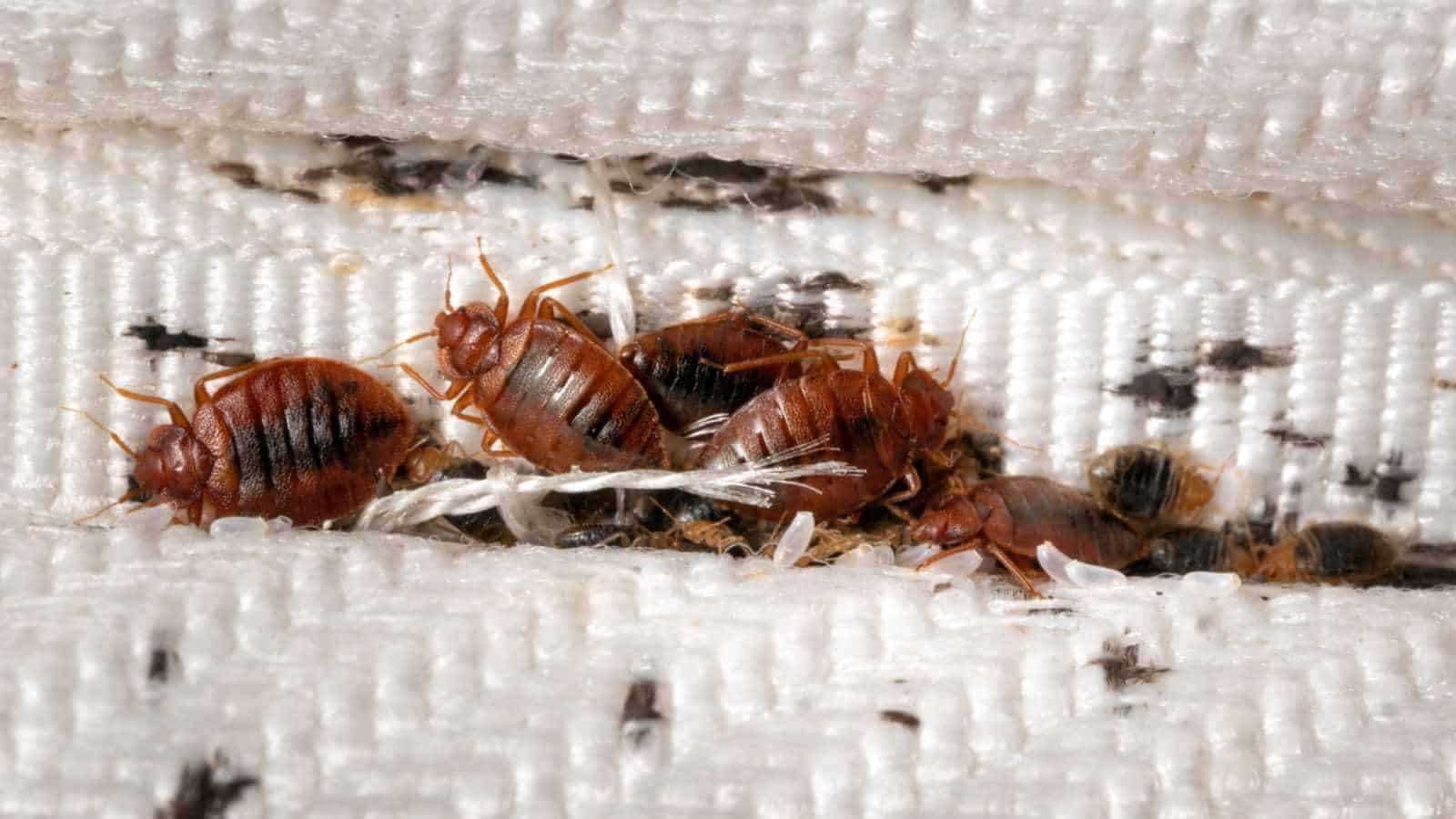
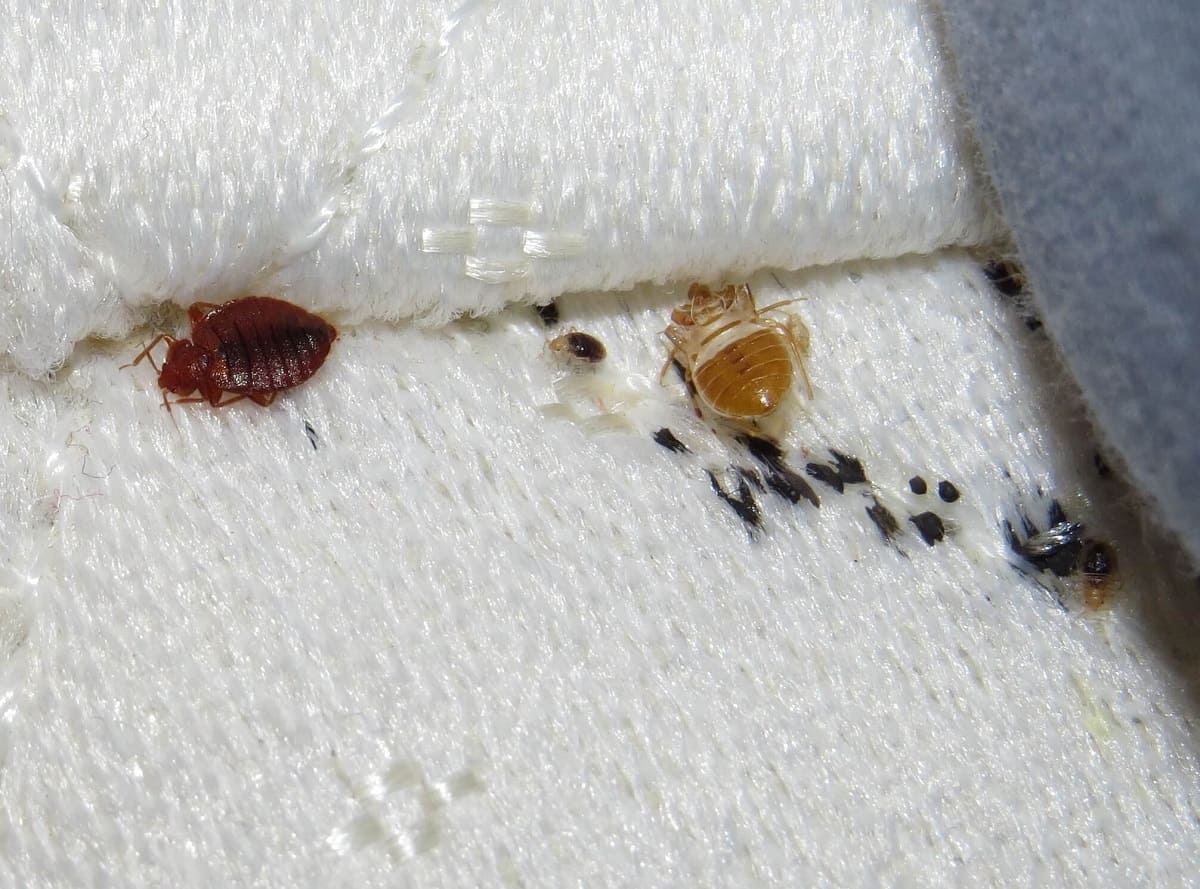
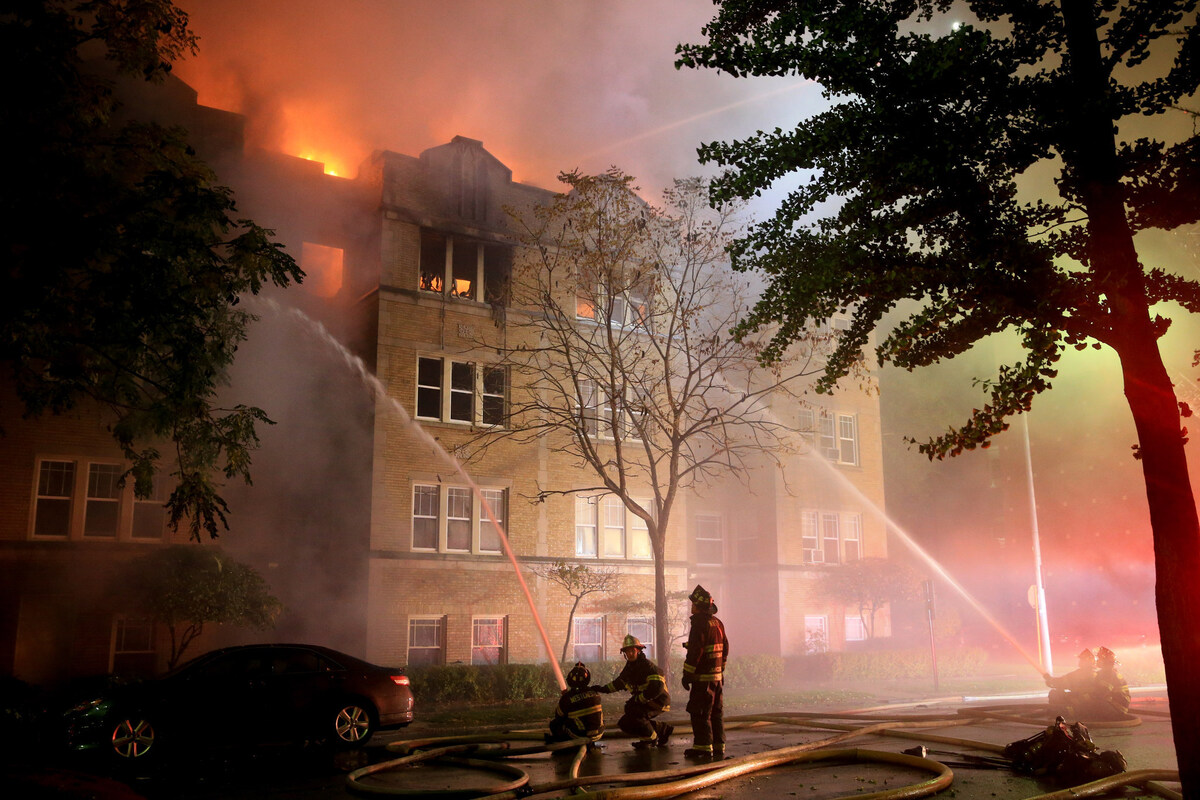
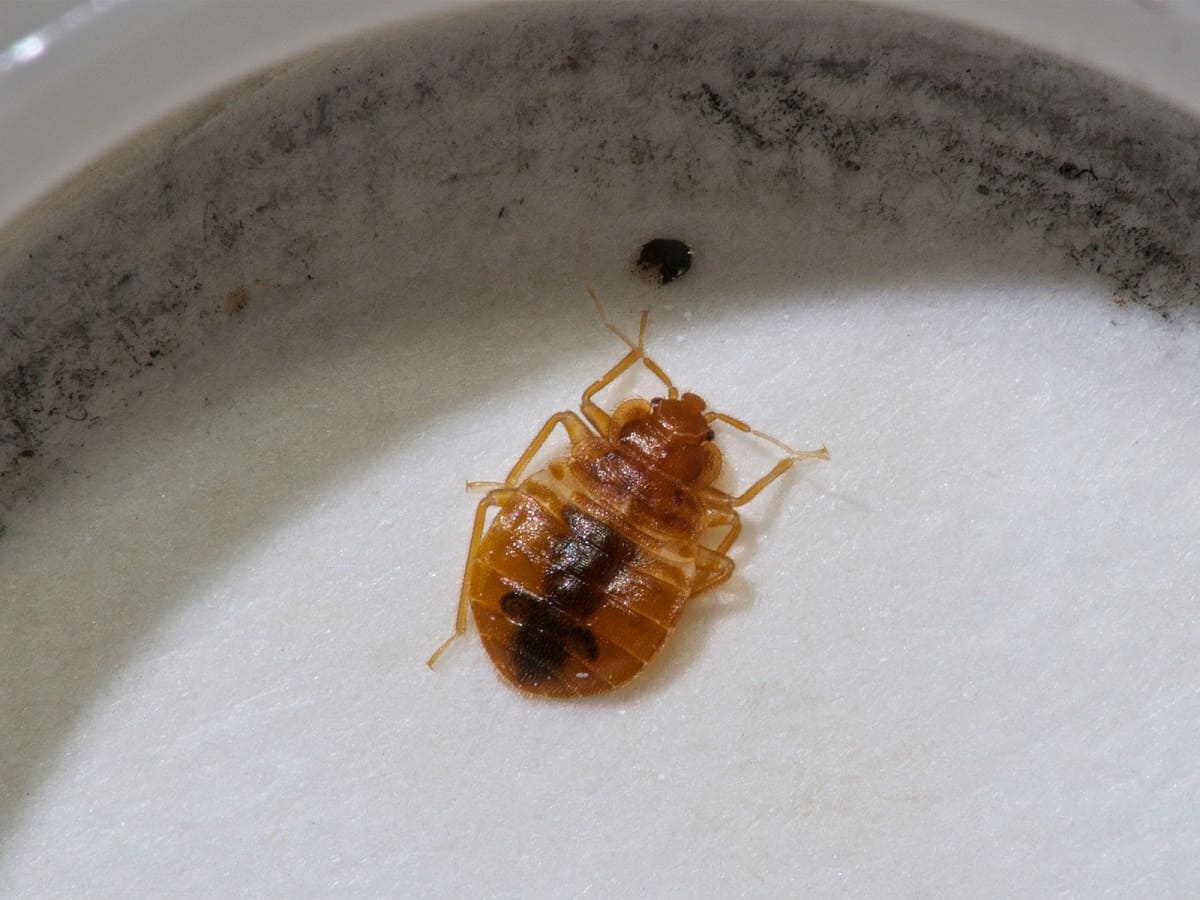
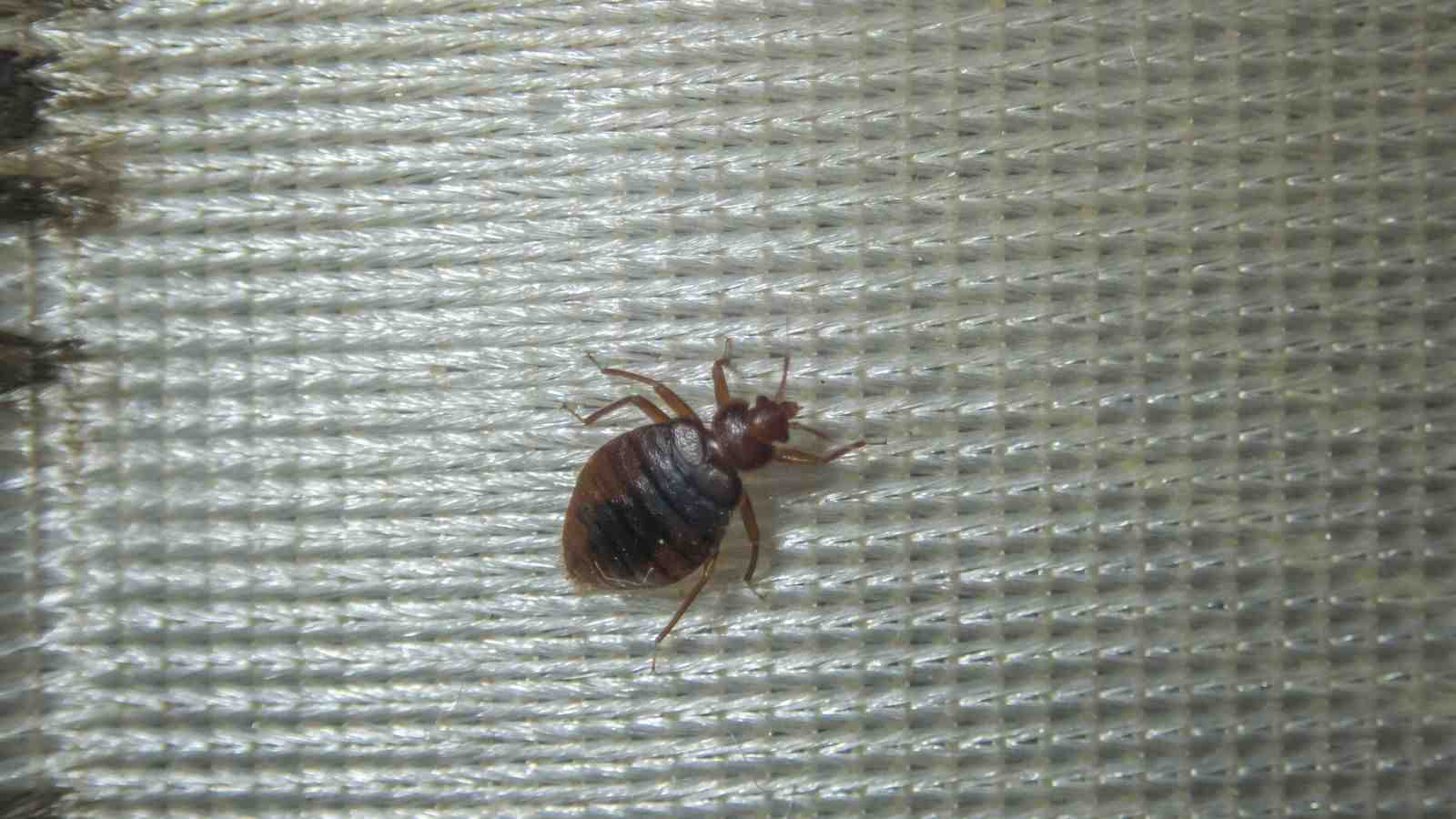


0 thoughts on “How Do Bed Bugs Spread In An Apartment Building”